- Home
- Peter Lovesey
Diamond Solitaire pd-2 Page 19
Diamond Solitaire pd-2 Read online
Page 19
A memory was triggered, and he had the explanation. He recalled something the switchboard operator at Earls Court Police Station had said. “Rohans are really something else-all those pockets.”
The stiffness wasn’t the result of rigor mortis at all. On each side of the trousers there were two front pockets fitted over each other, the inner one fastened with a zip. He pulled the tab. The cause of the rigor mortis effect was inside that inner pocket.
He drew it out: a substantial leather wallet. He opened it and found a Japanese passport, issued in December 1988. The water had seeped through, damaging the edges of the pages, but the entries inside were unimpaired. Everything was written in English as well as Japanese. The passport holder was Mrs. Minori Tanaka, aged thirty-six. The photo was clearly of the dead woman.
She had a Yokohama address. He took out a pen and pad and noted it.
There was an entry for her child Emi, date of birth February 2,1984, sex female.
He sighed and shook his head. Emi��� Naomi. Poor little kid.
Voices sounded downstairs and the tone was familiar to anyone who has worked in the police. They hadn’t come to read the gas meter. There were solid footsteps on the stairs, and De Wint’s voice came in at intervals, pitched high as he played the respectable hotelier who has never had trouble before.
Quickly Diamond examined the rest of the wallet. Those missing boarding passes were there, and the flight tickets. Also, tucked inside, a small batch of photographs. He glanced through them, picked one out and then stared at it in some surprise before slipping it into his pocket. On this occasion, he decided, he wouldn’t declare everything to the police.
CHAPTER TWENTY-ONE
The two patrolmen first up the stairs had one thing, and one only, lodged in their brains: if this was murder, the scene had to be sealed until the Crime Scene Unit arrived. Having viewed the body, they didn’t go so far as to take off their shoes and tiptoe from the room, but they were pretty fastidious about avoiding contact with anything except the carpet. Such discipline ought to have sounded a warning bell for Diamond, but his mind was on other things. He followed them out and told them that something else had to be done, and urgently. He gave them descriptions of Naomi and the man in the leather jacket, and the white Buick, including its license number. The patrolmen seemed to take umbrage at this big, bluff Englishman issuing orders, so he changed to a more respectful approach. Patiently, more patiently than anyone who knew him would have credited, he repeated everything until one of them took the decision to transmit the message to Central that a murder suspect was at large with a seven-year-old Japanese girl believed to be mentally handicapped. He could do no more. The machine took over.
The scene of the killing became a honeypot for homicide detectives, the forensic team in white overalls, police photographers, the coroner’s assistant and the medical examiner. Procedural activity compartmentalized the horror of violent death and made it manageable.
For the next three hours Peter Diamond was put through the grinder by detectives.
Violent deaths were commonplace in New York, but the case of Minori Tanaka had unusual features. More than one of the interrogators commented that it was a cruel killing. Even murders have their scale of acceptability and a bullet through the head rates several points above a drowning. The tying of the victim’s hands was picked out as a particularly nasty feature. One officer commented that drowning may have been used because it was a relatively silent way to kill. It was true that the manager, De Wint, hadn’t heard anything to alert him. If Diamond hadn’t arrived and demanded to be let into the room, the body would have remained undiscovered until the next day.
The workover he was given was outrageous, in his opinion, considering who he was, and he told them so. Homicide were unrepentant. As an ex-detective he’d conducted himself, in the words of one lieutenant, like Winnie the Pooh in a James Bond movie. While he didn’t accept the comparison, he pretended to see it their way after a couple of hours of being shouted at.
He was driven to the 26th Precinct station house to assemble a photofit of Leather-jacket; a task he’d often demanded of witnesses himself, without appreciating how difficult it was to arrive at a likeness. Afterwards, they got him to look through photos of known criminals. A fruitless exercise that had to be gone through.
By eleven that evening there was still no news of the Buick except that it was identified as a stolen car, taken from a street in Queens early that morning. If a car isn’t stopped within the first two hours of a call going out, he was told, the chances of arresting anyone are slim. They abandon the car and take another if they’re professional crooks, and who in New York would admit to being an amateur? He asked if the patrols were being reminded of the details. The transmitter was red-hot, he was told. When a kid is at risk, really at risk like this Japanese girl, the alert has top priority.
“So is there anything else I can do?”
He got the answer he expected.
“You’re asking me to leave, then?”
“You got it. What’s your address?”
“What?”
“Where are you staying, man?”
He hadn’t even considered until this moment. “I, em, haven’t checked in yet.”
“Mister, it’s a little late in the day.”
He settled for a room in the Firbank. Downstairs, without bath, at sixty dollars. Probably a sensible choice. While his sumo sponsor might conceivably have stumped up for a five-star hotel downtown, this was where the action was. And a five-star hotel downtown might have looked askance at a guest without any baggage at all.
The action! Why do I kid myself, he thought. I’m sidelined here. A killer is holding a handicapped child somewhere in this city. Even the police are getting no information.
Patience, self-discipline, confidence that something will turn up-these are the props a senior detective learns to support himself with when everything has been done and nothing seems to be happening. He’d been through it many times. The pressure was extreme, but you had to be strong.
In the privacy of the first-floor bathroom, he took from his pocket the photograph he’d found in Minori Tanaka’s wallet, having suppressed his curiosity for hours. A curious picture to carry in a wallet. Not the kind of snap people hand out to friends when families are mentioned. It was a shot of a gravestone.
Most of the inscription was in Japanese, with the exception of some numerals showing the dates of birth and death of the deceased. He had to squint to read them: 2.2.1984-12.12.1988
He dipped into his pocket for the notes he’d made of the passport details and found that his memory wasn’t at fault. The child named in the passport, Emi Tanaka, had been born on February 2, 1984, which was identical to the date of birth on the gravestone.
A coincidence?
No.
A twin?
Unlikely.
Most probably Emi Tanaka was dead.
If so, she had been dead four years. Yet Mrs. Tanaka had brought Naomi through immigration at Heathrow and JFK by using this passport, suggesting that she was the child born on February 2, 1984. The age was about right. No other identification is required when children travel on their parents’ passports. No photo. No birth certificate. Not even descriptive details.
He returned to his room and lay on the bed pondering the reason why a woman should take a child-an autistic child-all the way from Japan to England, pretending it was hers. The obvious assumption was that she had kidnapped Naomi. Maybe she was one of those unfortunate mothers who snatch somebody else’s child because their own has died. He’d investigated a similar case in England, although both children had been much younger, just a few months old in fact. The distress had affected everyone, not least himself. He’d been relieved that the woman was treated with leniency by the court. Anyone who has suffered the loss of a young child, or the grief of a miscarriage, can understand the motive for such actions, criminal as they may be.
With the facts so far, he starte
d putting together a scenario. Somewhere in Japan in 1988, Mrs. Tanaka’s child Emi had died, aged four years and ten months. The grief-stricken mother had been unable to come to terms with her loss. She had to endure the sight of her dead child’s friends growing up and enjoying the world, as Emi should have done. Either by chance or intention she observed the children in a school for the handicapped. Naomi was one of them, and Mrs. Tanaka noticed her particularly because she was about the age Emi would have been. She coveted her. Not understanding Naomi’s autism, she persuaded herself that this beautiful and apparently normal child was merely unwanted and unhappy, and that she could be a good mother to her and give her the love she craved.
So she contrived some way of snatching her from the school.
Then she’d flown to England, using her own dead child’s entry on the passport to get Naomi past the immigration checks.
In London (the scenario went on), in fact, on a shopping trip to Harrods, Naomi had succeeded in escaping from this woman who had kidnapped her. She had hidden in the furniture department, and there she had been found after the store closed.
Distraught, Mrs. Tanaka had not known how to get the child back. Afraid of contacting the police or the Japanese Embassy, she had waited for news of where Naomi was being looked after. Eventually, perhaps by recognizing her on television, she had tracked her to the school. By calling there early in the morning, she had avoided meeting the teaching staff. Her strength of will had outmatched Mrs. Straw’s. Reunited with Naomi, she had made her escape to New York.
There the theory foundered. The events in America were inexplicable. Leather-jacket’s involvement didn’t fit any facts at all. Apparently he’d been waiting to meet Mrs. Tanaka and the child-with murder in mind. If not, then he was a killer who picked up women randomly at airports and murdered them-but would a random killer approach a woman with a young child? Surely he’d have the sense to foresee the problems that would bring. Anyway, the nature of the killing didn’t square with a casual pickup. The usual motives of sex and theft just didn’t apply.
Well into the night Diamond grappled with the inconsistencies, trying to develop the scenario and finding it impossible. Somewhere earlier in the chain of events there must have been an American connection he’d missed, he decided, but that was the limit of his speculation. At some stage he left the room and went upstairs to check whether anything new had emerged. He found a solitary cop slumped in a chair outside the murder room. No one was inside. Homicide had left, and the inquiry was now being conducted from Headquarters, wherever that was.
He returned to his room, stripped and got into bed. Back in England, it would be morning already. He didn’t feel like sleep, but he was dog-tired.
CHAPTER TWENTY-TWO
The Crime Scene Unit were running the inquiry their own way, and the detective skills of Peter Diamond were not included in the plans. He was finding that being a bystander was more stressful than heading the murder squad.
Early in the morning, realizing he hadn’t eaten anything since the flight from London, he went looking for a coffee shop and found Hungry Mac’s on Broadway and 114th. Number Seven on the menu, with just about everything in the kitchen included, carried the promise of what he regarded as a basic breakfast, and he ordered a double portion. He was on one of the stools at the counter-an uncomfortable perch for a big man-in order to get a view of the TV set. The Firbank wasn’t the sort of hotel that provided television in the rooms, so he hadn’t yet seen if there was any news coverage of the murder and Naomi’s abduction. To add to his frustration, some kind of idiot game show was on the screen at present and two of the customers were watching as if it were the high point of their week.
He should have realized he’d get the information he wanted from the man who took his order.
“You think you can put away two breakfasts?”
“I’m certain I can.”
“You visiting?”
“Er, yes.”
“From England?”
“Yes.”
“Where you staying?”
He hesitated. He hadn’t personally experienced rapid-fire interrogation by a New York waiter, though he’d seen others getting the treatment. “The Firbank.”
“Where they found the dead woman?”
“Yes.” He tried to make light of it. “Hot and cold in all rooms. Towels and corpse provided by the management.”
“You get some crazies these days,” the man remarked to the shop in general, and it wasn’t entirely clear whether he meant Diamond. “This guy slept in the Firbank last night.” Evidently he did mean Diamond.
The place was pretty full, but no one else seemed interested where Diamond had slept.
When the plateful of bacon, sausages, hash browns and four eggs, easy and over, was served with toast and coffee, there was an extra tidbit in the form of some hard information from the waiter. “I hear they found the car the killer used.”
Diamond had the knife and fork poised over the plate. “Where?”
“Some cop spotted it in Chinatown.”
“No one in it, I suppose?”
“No chance.”
He bolted his double breakfast at a rate that would be a talking point in Hungry Mac’s for weeks to come and legged it rapidly down to the 26th Precinct station house. There, his air of authority carried him through as far as Sergeant Stein of the Detective Bureau, a gangling, grizzled man in a faded pink shirt and black jeans, who-this morning-was the senior detective on the case.
“You’re the British cop,” Stein said in a tone that suggested he’d been warned to look out for Diamond.
“I hear you found the car.”
“A patrolman did.”
“Chinatown. Is that somewhere near the Bowery?”
“You could say that.”
“Where exactly is it, then?”
“Chinatown?”
“The Buick.”
“They moved it,” said Sergeant Stein, and added, after a considerable pause, “for forensic examination.”
“So what time was it found?”
“A statement will be issued later.”
“Come on,” said Diamond in a flush of annoyance. “I’m not here out of morbid curiosity.”
“What are you here for?” Stein asked.
“For a missing child out there with a murderer. Isn’t that a good enough reason for the New York Police Department?”
Stein was unrepentant. “Mister, I should be asking you the questions.”
“Like what?”
“Like what is your special interest in this kid?”
Diamond tensed. “What exactly are you driving at, Sergeant?”
“We take a good look at middle-aged guys who follow little girls.”
The sergeant came within an ace of being thumped, and he knew it, because Diamond advanced on him until they were almost nose to nose like boxers staring each other out. “That is not only insulting, it’s also provocation,” he said on a note from deep in his gut. “If you want to hang on to your shield, don’t ever give horseshit like that to a senior policeman.” The minor detail that he was no longer a senior policeman didn’t arise. He’d reacted as if he was. In the heat of the moment, he’d have needed to think hard to remind himself that he was not. And Sergeant Stein wasn’t to know.
Stein backed down, actually raising his right palm like an Indian making peace. “Just overlook what I said, would you? It was a heavy night.”
“Tonight could be heavier,” Diamond told him. “Well? What time did they find the car?”
“Around two A.M. on Mulberry Street.”
“Anyone see anything?”
“No witnesses yet.”
“Where was the car taken to be examined?”
“Forensic has a workshop on Amsterdam.”
“Is that a walking proposition?”
“You want to visit? You can ride with a patrol. Just wait here. Mr. Diamond.” Nodding a number of times to demonstrate his newfound cooperativeness
, Stein departed thankfully from Diamond’s presence.
The ride to Amsterdam Avenue in the company of a laconic, gum-chewing officer allowed Diamond to weigh Stein’s remark. Child abuse had always been around, yet lately its notoriety had increased sharply. Whether the practice was on the increase was another question. As with rape and other sexual offenses, the statistics needed to be put in the context of the greater opportunities for reporting and detecting the crimes. Whatever the truth, the public perception was that any man not actually a parent or a teacher had better not be seen alone with a young kid. He understood the need for vigilance, but he still regretted the fact that a few sexual deviants and sensation-seeking newspapers could make trust between man and child seem so unlikely as to be impossible anymore.
Without a kid of his own, he couldn’t truly view the question as a parent would, but were childless people who liked children fated to be treated as potential perverts?
The place where vehicles were taken for the forensic tests was hardly the squeaky-clean workshop-cum-laboratory Diamond had expected to walk into. It was a converted garage with a couple of ramps and inspection pits manned by young men in greasy overalls. The Buick was parked on the forecourt and was getting no attention at all.
He soon found an easygoing and friendly “evidence technician” who appeared not to have been warned to watch out for a troublemaking British cop, and was quite willing to talk. “The Buick? It’ll take us at least a week. From what I can tell so far, half of New York seems to have driven that car and used it for sex and smoking. My guess is that it was owned by a syndicate of students.”
“You’ve done some preliminary work, then?”
“Had to look inside, remove most of the litter for examination.”
“What does it amount to?”
“The litter? Cigarette packets and butts, candy wrappers, sandwich wrappers, tissues, condom packets, gasoline receipts, Alka-Seltzers, chewing gum, ballpoints, parking tickets, panty-liners, takeout containers-want me to go on?”
“Quite a heap, I should think,” Diamond commented. “Or have you bagged it up already?”

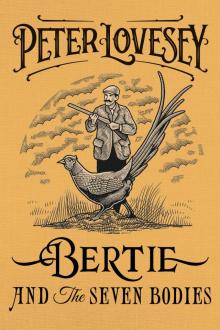 Bertie and the Seven Bodies
Bertie and the Seven Bodies The Headhunters ihmi-2
The Headhunters ihmi-2 Diamond Solitaire pd-2
Diamond Solitaire pd-2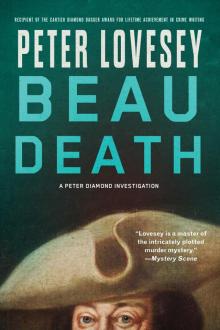 Beau Death
Beau Death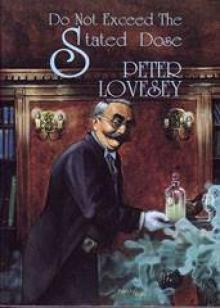 The Case Of The Dead Wait
The Case Of The Dead Wait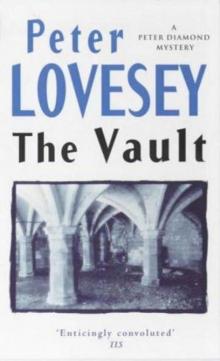 The Vault
The Vault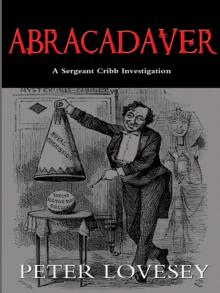 Abracadaver sc-3
Abracadaver sc-3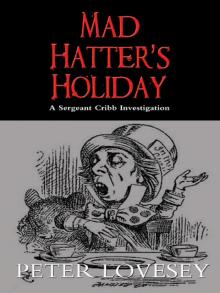 Mad Hatter sc-4
Mad Hatter sc-4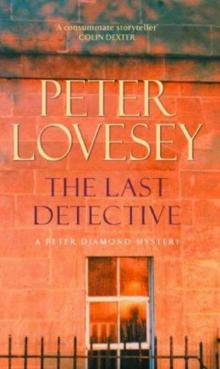 The Last Detective pd-1
The Last Detective pd-1 The Reaper
The Reaper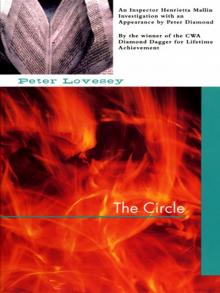 The Circle
The Circle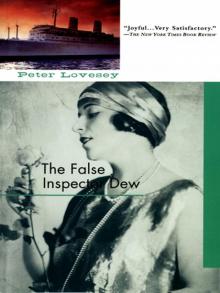 The False Inspector Dew
The False Inspector Dew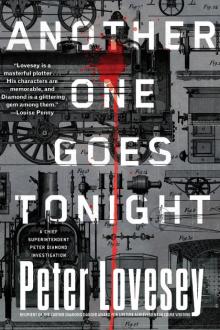 Another One Goes Tonight
Another One Goes Tonight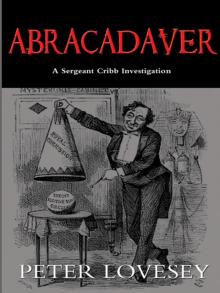 Abracadaver
Abracadaver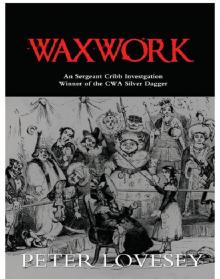 Waxwork sc-8
Waxwork sc-8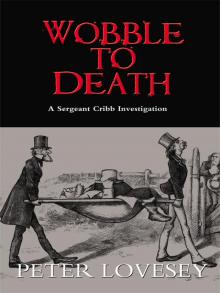 Wobble to Death sc-1
Wobble to Death sc-1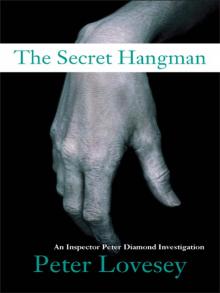 Peter Diamond - 09 - The Secret Hangman
Peter Diamond - 09 - The Secret Hangman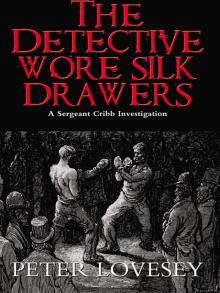 The Detective Wore Silk Drawers sc-2
The Detective Wore Silk Drawers sc-2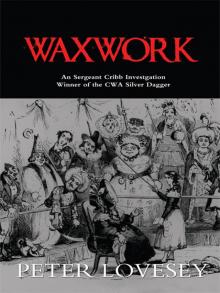 Waxwork
Waxwork The Summons
The Summons Mad Hatter's Holiday
Mad Hatter's Holiday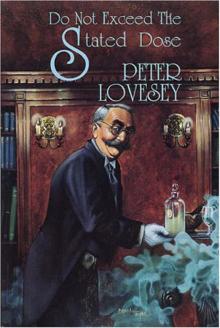 Do Not Exceed the Stated Dose
Do Not Exceed the Stated Dose The Stone Wife
The Stone Wife The Secret Hangman pd-9
The Secret Hangman pd-9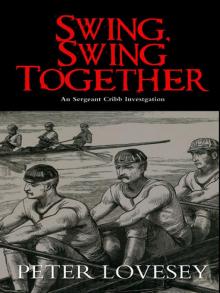 Swing, Swing Together sc-7
Swing, Swing Together sc-7 Upon A Dark Night
Upon A Dark Night Bloodhounds
Bloodhounds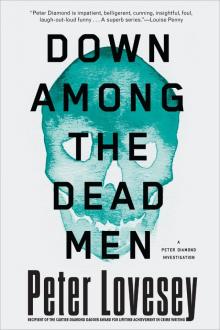 Down Among the Dead Men
Down Among the Dead Men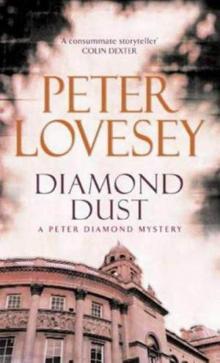 Diamond Dust
Diamond Dust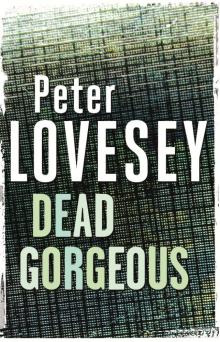 Dead Gorgeous
Dead Gorgeous Murder on the Short List
Murder on the Short List The Usual Santas
The Usual Santas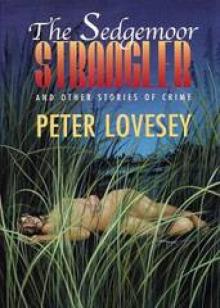 The Perfectionist
The Perfectionist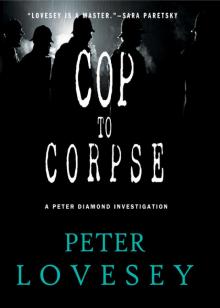 Cop to Corpse
Cop to Corpse Rough Cider
Rough Cider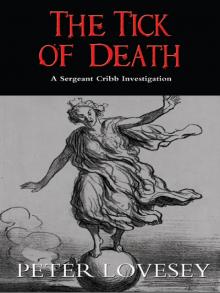 The Tick of Death
The Tick of Death Bloodhounds pd-4
Bloodhounds pd-4 Remaindered
Remaindered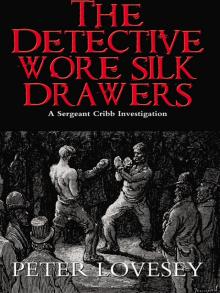 The Detective Wore Silk Drawers
The Detective Wore Silk Drawers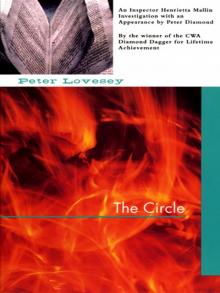 The Circle ihmi-1
The Circle ihmi-1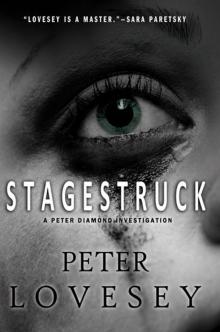 Stagestruck
Stagestruck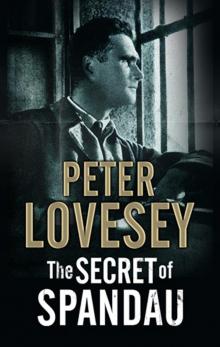 The Secret of Spandau
The Secret of Spandau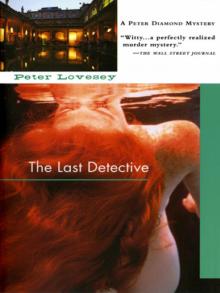 The Last Detective
The Last Detective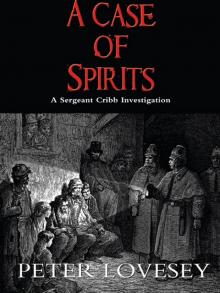 A Case of Spirits sc-6
A Case of Spirits sc-6 The Headhunters
The Headhunters Goldengirl
Goldengirl The Summons pd-3
The Summons pd-3 Diamond Solitaire
Diamond Solitaire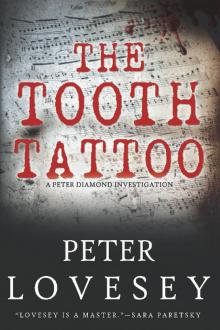 The Tooth Tattoo
The Tooth Tattoo The House Sitter
The House Sitter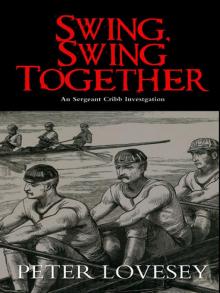 Swing, Swing Together
Swing, Swing Together